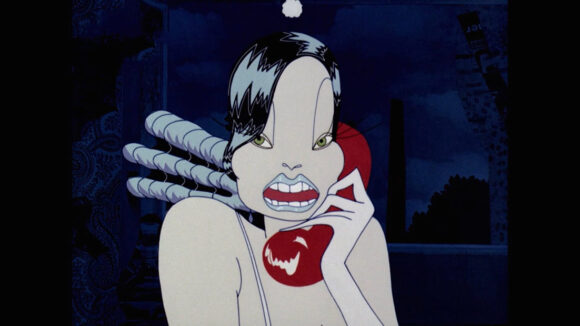

These Mind-Bending Hungarian Animation Classics Are Free To Watch Right Now
The Hungarian National Film Archive has made available dozens of vintage animated shorts, commercials, and even feature films on its Vimeo page, but only for a limited period of time. The collection is available through the holidays and will be taken offline January 4, 2019.
The films have recently been digitally restored by the archive, so even if you’re among the lucky few who has seen them before, there’s a good chance you haven’t enjoyed them in such pristine condition. Another added bonus: some of the films have English subtitles.
In terms of feature films, you’ll find Marcell Jankovics’ 1973 work János vitéz (Johnny Corncob), the first animated feature produced in Hungary and a warm-up act for his later masterpiece, Fehérlófia (Son of the White Mare). If you need some context on the film, read our interview with Jankovics from a few years ago.
Even more exciting, the second feature that’s available is György Kovásznai’s exhilaratingly experimental 1979 film Habfürdő (Foam Bath), which stands quite apart in both form and substance from any other animated feature ever made.
Habfürdő gleefully upends every principle of traditional character animation and invents a unique, personalized style of motion to tell its story. It defies easy categorization and can barely be discussed using the established language of character animation; for example, can drawings of a character go “off-model” if there’s really no model to begin with? To borrow from a bit I’d written earlier, “Kovásznai understands the power of the drawing to express a range of emotions and feelings that can’t be captured by a live-action camera. The film suggests a new range of symbolic acting possibilities in character animation, while showing that the animated character is far more malleable than most Western filmmakers dare to consider.”
The plentiful shorts available on their Vimeo page represent a who’s who of Hungarian animation including works by Attila Dargay, Gyula Macskássy, Ferenc Rofusz, and István Bányai, among others. These films represent a different approach to storytelling than Western filmmakers, and they are often infused with rich metaphors and hidden meanings. This approach to storytelling was not necessarily by choice — since filmmaking was controlled by the Communist state, filmmakers needed to be ambiguous in their storytelling if they wanted to bypass government censors.
Visually, however, the filmmakers were largely free to explore different graphic styles and techniques. Since the films were state-supported, there was no commercial imperative or need to adhere to safe, conventional styles. Animators could thus experiment to their heart’s content, and in the process, they exposed audiences to fantastically fresh graphic imagery.
For a more detailed look at 20th century Hungarian animation, here’s an overview of key players throughout its animation history and here’s an insightful essay by Zoltán Varga that includes a discussion of some of the films embedded below.
Here’s a small sample of what the Hungarian National Film Archive has made available for viewing:
Párbaj (Duel) directed by Gyula Macskássy, 1960: “The fight between the Scientist who discovers atomic energy and uses it for peaceful purposes and Mars who wants to use atomic energy for destruction, is won by the former one.”
Variációk egy sárkányra (Variations on a Dragon) directed by Attila Dargay, 1967.
Rendhagyó történetek (Unusual Stories) directed by Attila Dargay, 1967.
Sisyphus by Marcell Jankovics, 1974.
Babfilm by Ottó Foky, 1975: “A strange creature visits a very strange planet, where it watches the lives of the beans, the inhabitants of the planet. When the beans notice the creature’s watchful eyes, they drive it away.”
Hé, te! (Hey, You!) by Péter Szoboszlay, 1976: “A film about the distorting effect of force and agression.”
Hamm by István Bányai, 1977: “The tragedy of greediness, or the drama of insatiability.”
A légy (The Fly) by Ferenc Rofusz, 1980: “A fine day in the life of a fly presented completely from the fly’s point of view.”
Mixed in with the shorts, there’s a bunch of commercials as well, like the ones below. There’s plenty to discover and there’s only a week to do it, so head over to their Vimeo page and start exploring today.

.png)